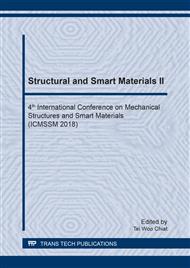p.14
p.20
p.26
p.34
p.43
p.48
p.53
p.58
p.66
Study on Wrinkles during Rotary-Draw Bending Forming
Abstract:
The purpose of this research is to determine the state inside the material using finite-element analysis and to improve the performance of a rotary-draw bending forming by clarifying the mechanism of wrinkle generation. An analytical model of rotational drawing was made by using the general-purpose nonlinear finite-element analysis software MSC Marc, and the analytical results were compared with experimental results to verify the validity of the model. Furthermore, the mechanism of wrinkle generation was investigated. With the progress of processing, wrinkles occur not in the R part but in the original tube-side straight-tube part. The coefficient of friction between the tube material and the R portion of the bending mold promotes the occurrence of wrinkles and the growth of the generated wrinkles. Because wrinkles occur even if the friction coefficient between the tube material and bending mold R part is ignored, the generation condition of wrinkles also depends on parameters other than the friction coefficient.
Info:
Periodical:
Pages:
43-47
Citation:
Online since:
January 2019
Authors:
Keywords:
Price:
Сopyright:
© 2019 Trans Tech Publications Ltd. All Rights Reserved
Share:
Citation:


